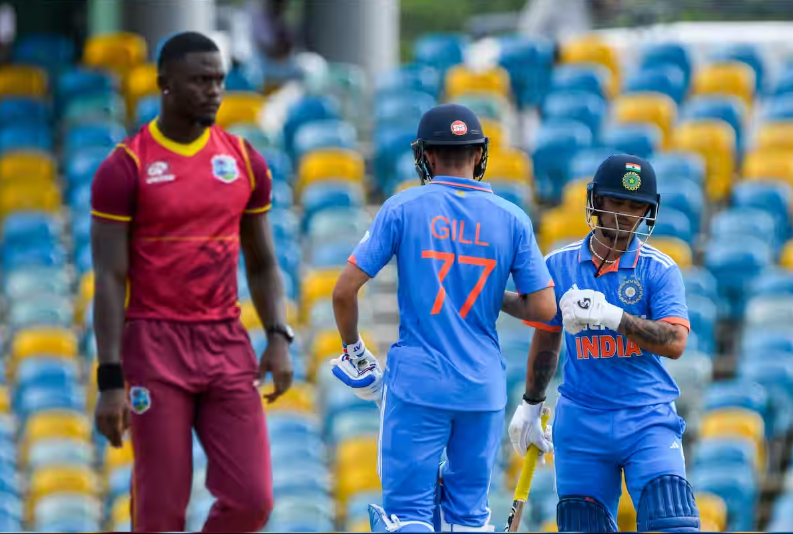
In a display of sheer batting brilliance, India showcased their dominance in limited-overs cricket, against the West Indies in the final ODI of the three-match series. Hardik Pandya’s exceptional fifty anchored India to an imposing total of 351/5 in 50 overs.
Opting to field first after winning the toss, the West Indies had high hopes of capitalizing on the opportunity the West Indies were immediately put on the back foot by India’s young opening duo. India’s young opening duo, Gill and Kishan, laid a solid foundation with a remarkable partnership. The duo complemented each other’s strokes beautifully, displaying immense maturity beyond their years. Gill, in particular, was in sublime touch, top-scoring with 85 runs, and Kishan played a brilliant innings of 77 runs. The real fireworks came from the blades of Sanju Samson and Hardik Pandya. Samson showcased his ability to accelerate the innings as he slammed an explosive half-century off just 41 deliveries, sending the West Indian bowlers on a leather hunt. His attacking style and precise shot selection left the hosts shell-shocked. Not to be outdone, Pandya, leading the side in the absence of Rohit Sharma and Virat Kohli, proved his mettle both as a captain and a batsman. His unbeaten 70 runs were a testimony to his immense potential and composure under pressure. With a daunting target in front of them, the West Indies struggled to contain India’s aggressive batting lineup. Despite some resistance, the hosts eventually succumbed to the pressure exerted by India’s disciplined bowling attack.
Romario Shepherd was the pick of the West Indian bowlers, claiming two wickets, but his efforts were insufficient in preventing India from posting a massive score. However, their plans were foiled as they failed to find any breakthroughs or put a check on the aggressive Indian openers. The dropped catch of Ishan Kishan, when he was on 9, added to their woes and proved to be a costly mistake.
Lack of discipline in their bowling allowed the Indian batsmen to build substantial partnerships and score freely in the first 30 overs. The absence of control further compounded their problems as the Indian batsmen took advantage of loose deliveries, adding to the mounting pressure on the West Indies. Amidst the struggle, the West Indies managed to stage a mini-revival during the 32-40 overs phase by tightening their lines and restricting boundaries.














